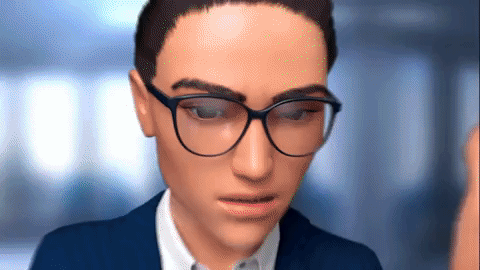Progressive lenses were an amazing step forward in lens technology; however, as we continue to innovate, there is more to learn, and more ways we can refine our lens designs.
For example, how often are your patients underwhelmed or uncomfortable with their new progressive lenses? It’s relatively common and yet sometimes difficult to pinpoint why– especially after what seemed a successful eye exam.
Here’s what could be going on and how to fix it with the right eye technology.
Handling binocular disparity in presbyopic patients
Currently, 7 in 10 presbyopes have different prescriptions between their left and right eyes1, and this leads to a frustrating amount of eye strain symptoms, especially when reading.
The smallest amount of binocular disparity (when there is a difference between your two eyes prescriptions) means that light passing through each lens will be refracted differently. Therefore, the prismatic effect of each lens will be different. The result is a visual imbalance that can cause asthenopic complaints such as unstable blurred vision, tired and burning eyes, and headaches.
In other words, presbyopic patients need their brains to work harder to even out the images processed by each eye– because their eyewear provides slightly different images.
Single vision lenses create less strain because the wearer can adjust objects for near vision (they simply use the central position of the lens). On the other hand, progressive wearers need to use different areas of the lens depending on the activity.

This creates discomfort, and a wearer’s vision is only clear when covering one eye or the other. Binocular balance in presbyopes is possible now with our patented Binocular Harmonization Technology™ (BHT).
Balancing presbyopia with Binocular Harmonization Technology
Binocular Harmonization Technology is the latest ophthalmic lens tech that takes into account binocular disparity. By adjusting the progressive corridor lengths, power distribution and lens thickness, maximum binocularity is achieved at near. It uses five new measurements in the Binocular Eye Model:
- Binocular Clearness Index: how clearly the wearer sees an image through the spectacle lenses.
- Convergence Difference between R/L: shows whether the two lens combinations force the wearer to apply either convergence or divergence as a function of the object distance, the power, the power difference and the prismatic difference (due to the power difference).
- Accommodation Demand Difference between R/L: the amount of accommodation an eye requires to view an object at any distance.
- Magnification Difference between R/L: the difference in spectacle lens magnification for the right and left eye.
- Vertical Prismatic Difference between R/L: the different prismatic effects of the pair of lenses in vertical direction.

By taking into account the differences between the two eye prescriptions and the 5 types of measurements above, we can adjust each lens to equalize image size and image position. This creates harmony between the two eyes and stable binocular vision at near. The patient’s eyes no longer have to self-correct, reducing their eye strain symptoms.
Learn more about the five primary elements of BHT that lead to optimal distance vision and full reading support.
Download the Free BHT White Paper
Progressive eyewear for presbyopic eye strain
70% of presbyopes have a different prescription between their two eyes1, which means they could be experiencing eye strain in their progressive lenses. Often, they don’t even realize what’s causing their digital eye strain symptoms, or they attribute it to things other than eyewear.
Whether your patients know they are feeling strain or not, you can offer them this binocular solution that’s unique in the market. Consider this: by 2030, the last baby boomer will reach the retirement age of 65 and the first millennials are reaching age 40, which means presbyopia is either already setting in or will be soon. There are more presbyopes needing progressive lenses than ever before, and they’re going to need ECPs to step in.
Binocular Harmonization Technology is currently available in the following progressive HOYA lenses:
- iD MyStyle 2TM
- iD Lifestyle 3TM
- Array® 2
- iD Space
- iD Screen
- iD Zoom
Give your patients the effortless focusing, constant stability, and excellent depth of vision they deserve.
Learning more about Binocular Harmonization Technology
To learn more about the technology behind BHT and see how it helps with correcting presbyopia in your patients — download our comprehensive ebook Binocular Harmonization Technology & Binocular Eye Model.
1Hoya data in file. European progressive lens orders 2007-2013

